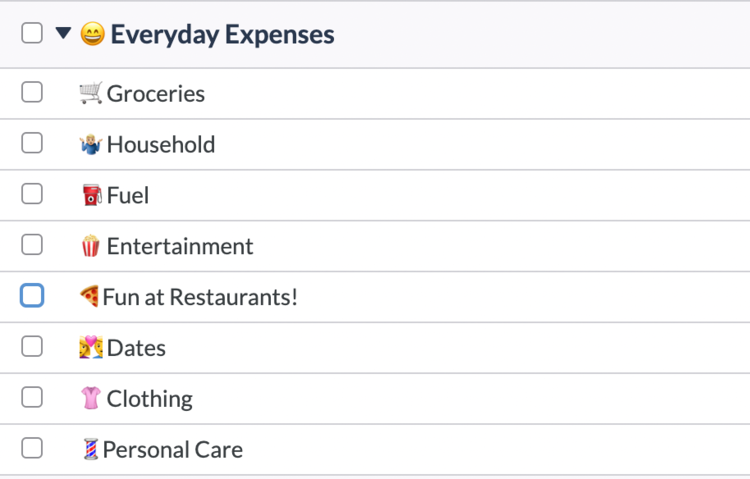A few weeks ago I started a new job, which required a fresh look at our (somewhat neglected) budget. Being responsible stewards over what we’re given includes having insight into how we spend money, and aligning our spending with our—hopefully biblical—values. Here are four things I learned in the process.
1. Our budget reflects our values
Like many people, we have areas in our budget that we consistently overspend. Particularly eating out. Every month I’d watch in horror as we approached and then exceeded our allotted funds. So. much. money. (Of course, only we are to blame for this.)
Then we realized that taking out (a subset of) the family for a meal is actually something we value for the fellowship and conversation, especially as our kids are getting older. So we looked a bit closer at our eating out category and decided to cut out the times we do it just for convenience, and instead focus on the fun outings, like eating pizza and playing board games or taking a kid on a date. To reinforce the purpose of our eating out category, we also renamed it to “🍕Fun at Restaurants!”
To get our kids on board, we’ve explained the trade-off: we can go to Chick-fil-A during the week, or Slice & Dice this weekend, but likely not both. That made it pretty easy for them and all but eliminated the constant asking for a treat at this or that restaurant.
In general, our budget reflects our financial priorities, so it’s not a constraint, but a helpful tool to enable us to spend money on what we want. “Lazy” eating out was not something we wanted to spend money on, but time with the kids at a restaurant every once in a while was. Now our budget reflects this.
2. Setting targets is awesome
Not sure why this never clicked before: if I add up all the funding targets for my spending categories, they should add up to (at most) my monthly income. Groceries + electricity bill + mortgage + etc should be less than or equal to our income. If my expenses equal my income I have a balanced budget. If my expenses are less than my income, I have a surplus! That means money I can save or spend on somethinge else. So simple!
My budgeting app YNAB makes this very convenient. Once I set targets on most of our categories, it shows me how much I need every month to fund them all. If that’s less than my income, I have wiggle room. This cash-flow-centric view helps me plan for new savings goals, or increase or decrease current spending. It also lets me assign money from paychecks to all my spending categories with a single click! Getting paid was already fun, but seeing that money assigned to jobs that are meaningful to us—with a single click—is awesome!
Additionally, targets in YNAB are smart in that they assign only what is needed
to meet our stated goals. If I only spend $800 of my budgeted $1000 on
groceries, next month it will only fill the category back up to $1000, freeing
up $200 to put towards something else. Car insurance due every 6 months? No
problem! Set the target amount, date, and repeat every 6 months, and YNAB
figures out how much I need to put towards it every month to stay on track.
This has removed much manual work in my budgeting workflow, leaving me time to
just stare at all those nice, green, funded categories spend with my
family!
3. Budget for weekly things weekly
It’s the 10th of the month and you have $946 left in your groceries budget for the month. Is that good? Who knows? How many weeks are left in the month? Is the total monthly budget $1000 or $2000? Whether I can afford that fresh salmon this week because I’ve been frugal requires some mental math first. Instead, try setting up a weekly budget for groceries. For our groceries and eating out budgets, knowing how much is left for the week instead of the month saves us from having to do that math at the store. And with YNAB’s progress bars, I can see at a glance whether this week’s dinner highlight is baked salmon or rice and beans.

4. Emojis make me want to budget more
Alright, this one’s silly, but it works. Add emojis to your categories and you won’t die of boredom every time you scan your budget. It’s a little thing, but it makes the whole proces more enjoyable. Here’s what some of mine look like.

Get creative!
Maybe some of these tips resonate with you. Budgeting done right won’t constrain you, it’ll help you realize your financial goals. If you’re a member of Desert Springs Church and would like some help setting up your very own budget, get in touch!
Photo by Fabian Blank on Unsplash
